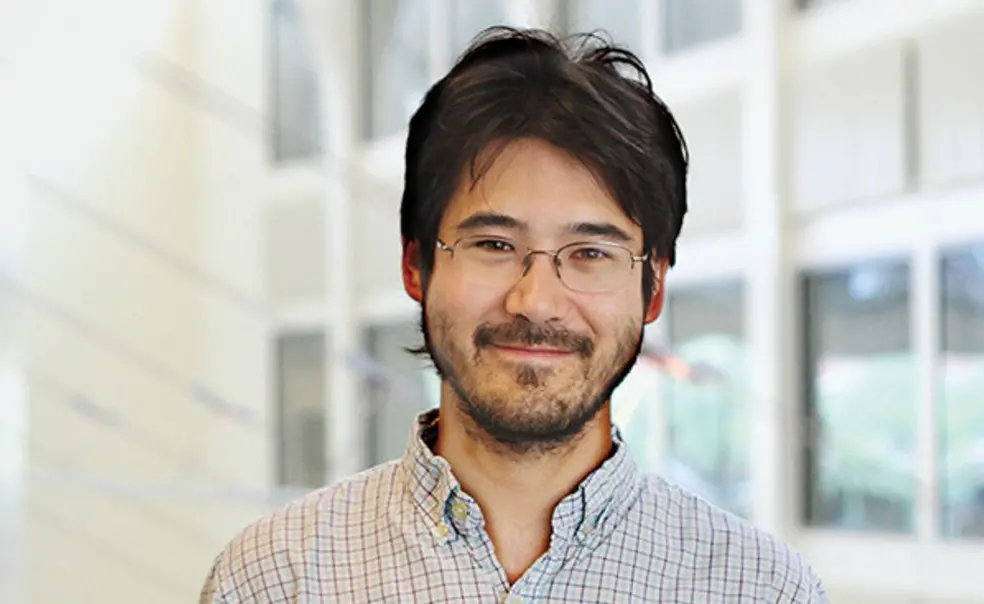Chris Hirata *05: Studying the Far Side of the Final Frontier
Chris Hirata *05 has always been ahead of his time. In elementary school, he was doing calculus and advanced physics. At 14, when he was about to graduate from high school and begin college at Caltech, a Chicago Tribune headline read, “Move Over, Einstein.”
The prodigy is a child no more, but he does have Einstein on the brain. Hirata, a 35-year-old physics professor at Ohio State University, is striving to understand the history, structure, and ultimate fate of the universe — and whether Einstein’s general relativity theory holds up over the universe’s 13.8 billion-year existence. Known for his work illuminating how early galaxies formed and the mysterious “dark” parts of the universe, Hirata won the 2018 New Horizons in Physics Prize, considered one of the “Oscars of science.”
Being the youngest kid in school was “interesting,” he says, but not difficult. His parents moved near the Caltech campus so he could live at home; at 16, he drew up charts and orbital diagrams of the Earth and sun to convince his mother that she didn’t need to pick him up from campus in the evenings, since there would be enough daylight for him to walk home. Still, he was able to maintain a social life through the swim team and other activities.
At Caltech, he pondered how best to deliver humans to Mars. But when he arrived at Princeton in 2001 for a doctoral program, his curiosity settled farther outside the solar system. The Sloan Digital Sky Survey was making 3-D maps of galaxies, and the Wilkinson Microwave Anisotropy Probe promised to deliver “baby pictures” of the universe by mapping its oldest light. The 18-year-old Ph.D. student wanted to make a difference in understanding how the universe had evolved.
Much of Hirata’s time at Princeton was spent on the fourth floor of Jadwin Hall, where he worked at “ancient wooden desks,” enjoying the rich intellectual environment where physics luminaries of the past had studied. He met his wife, Annika Peter *08, when she visited Princeton as a prospective physics Ph.D. student — his adviser told Hirata to make a “good impression.” (Peter is now also on the faculty at Ohio State.)
Today, Hirata is working to measure the effects of dark energy, the invisible force that expands the empty space between clusters of galaxies at an accelerating pace, silently defying gravity. If dark energy’s domination of the universe continues unfettered, over billions of years each galaxy will get pushed out into a “sea of nothingness,” Hirata says. Eventually, perhaps even the very particles that make up our world will drift away from each other.
But is that theory right? Future telescopes may help us find out, Hirata says, and “if so, we’ll be forced to confront the philosophical implications that it implies about our future.”












No responses yet